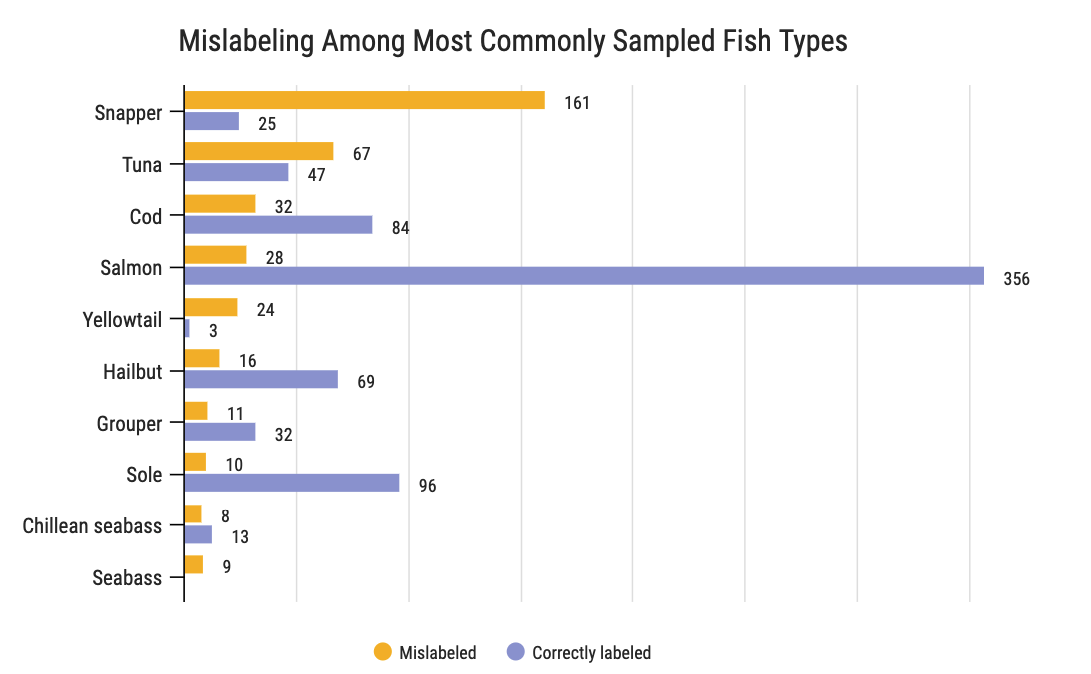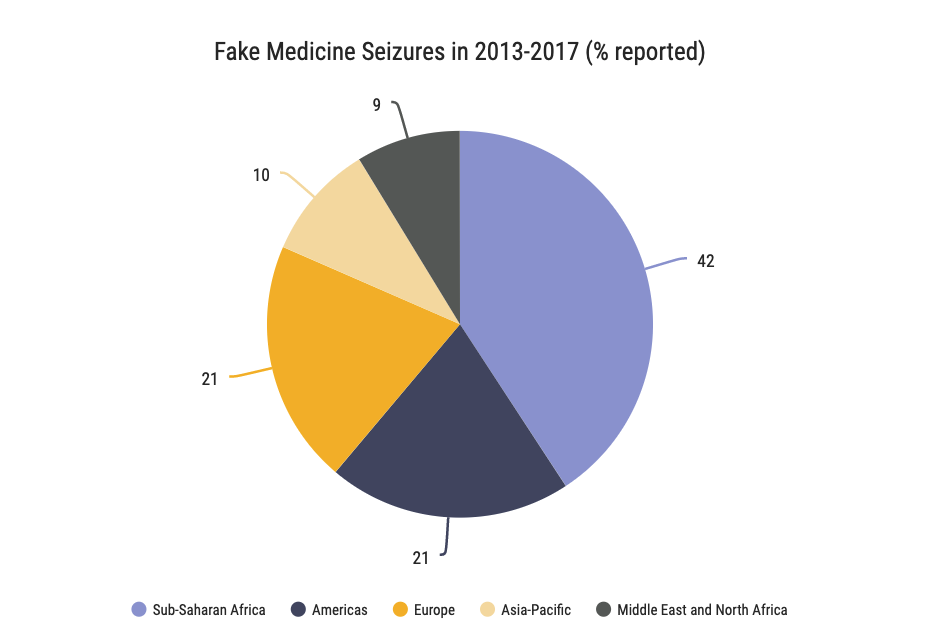 BACK TO ALL
BACK TO ALL

$31 billion by 2024, that’s how much a Juniper Research study shows that the global food supply industry could save by tracking products on the blockchain. Nearly $200 billion dollars’ worth, is the estimate for how much counterfeit medicine is sold each year. $4.5 trillion, the total annual trade in counterfeit goods. Whether it’s tracking food, guaranteeing the authenticity of medicine or putting a dent in the massive counterfeit goods market, blockchain is promising to eradicate fraud from the global supply chain. Ethereum specifically is the platform that most companies and organizations are choosing to work with. Being an immutable public blockchain with a huge developer community and expansive ecosystem, Ethereum is the ideal choice for supply chain tracking, retail risk management and fraud prevention.
Supply Chain Fraud in the Global Shipping Industry
To begin with we’ll look at how Ethereum can change the shipping industry for the better. The problem in shipping is that while the ships have gotten bigger and accidents have decreased thanks to advanced weather modeling technologies, the industry still depends on paper documents much the way it has for the last hundred years. Shipping manifests in particular are susceptible to fraud as they pass through multiple hands. If a manifest is found to have been altered it may be difficult to determine at what point in the supply chain the changes were made. Paper shipping manifests, like anything else physical, can be lost and a study by the port of Antwerp found that the handling of paperwork can account for up to 50% of the costs of shipping. Blockchain offers a far better solution. Ethereum based shipping manifests can go a long way toward ending supply chain fraud in the shipping industry. A shipping manifest recorded on the Ethereum blockchain cannot be lost. It can be easily transferred and any changes to the manifest are recorded immutably. When combined with IoT sensors, Ethereum can record the location of goods as they travel across the world, as well as other key pieces of data like temperatures and when a shipping container is opened. The most effective way to reduce losses from fraud throughout the supply chain is to constantly monitor the merchandise and record the data to an immutable, global ledger. That’s a solution that Ethereum offers.
Provenance Tracking
One of the key benefits of bringing Ethereum into a supply chain is that it enables provenance tracking; the tracking of a product from the factory all the way to the retailer. Ethereum can even be used to track the raw materials that a product is made with. All of this tracking can help to guarantee that a product is what it claims to be. For instance, from 2010 to 2012 Oceana conducted a study in the United States which revealed that on average one out three pieces of seafood is mislabeled. If seafood is being mislabeled it can make it difficult to know what is being sustainably fished and what’s not. Also, Americans (presumably seafood mislabeling is also prevalent in other countries) are simply not getting what they think they are which is not fair to the consumer.

Thankfully Ethereum can offer a solution. Working with the Ethereum development company ConsenSys, WWF found a way to use RFID chips, QR codes and the blockchain to track fish from the moment they’re hauled onto the boat, all the way through the supply chain to the retailer. One of the most common supply chain risk examples in the seafood industry is that a product is not what it claims to be. Short of genetic testing, to date there has not been an effective way to prove that a fillet of fish is actually the species it’s labeled as, or that it was fished sustainably. The WWF trial is changing that. By using blockchain they’ve shown that there is a low cost solution which can radically increase transparency for both retailers and consumers. When the blockchain-tracked seafood is packaged a QR code can be included. In the store the consumer can scan that code and learn where the fish was caught, how long ago and by whom. They can follow the fillet through the supply chain. This provides a radical new level of transparency that not only reduces fraud but also increases consumer confidence. Provenance tracking with Ethereum isn’t limited to seafood. RFID tags can be attached to almost any product allowing shipments to be tracked throughout the supply chain. Information, like location or temperature, recorded on Ethereum cannot be modified making it much more difficult to commit fraud. RFID tracking can also work effectively as part of a company’s internal controls to prevent theft. Critics of Ethereum supply chain tracking will often point out that just because something is recorded on the blockchain does not prove that it is what it claims to be. Afterall, a RFID chip can be stuck on anything, there’s no guarantee that the product in question is actually authentic. Further, a RFID chip can be removed and attached to another product at some point in the supply chain. While these are valid points, critics who flaunt them are failing to see the larger picture. For the first time in history we have a decentralized, borderless, universal, immutable ledger that can be used to record data. Ethereum has the potential to improve the efficiency of the global supply chain and significantly cut down on counterfeiting and fraud. While the critics make valid points what they’re not acknowledging is that by solving the data storage problem Ethereum has introduced a revolutionary new technology. Yes, there is still the question of inauthentic goods being tracked or RFID chips being moved, however, these are smaller hurdles which will be quickly solved as Ethereum adoption rises.
Following Pharmaceuticals Through the Supply Chain
According to a WHO (World Health Organization) study that collected data from 2007 to 2016, about 10% of all pharmaceuticals sold are either fake or contain a lower dose of active ingredients than advertised. The problem is especially prevalent in Africa and Asia. While in some cases the retailer knows that they’re buying from an unreliable distributor, in other cases pharmacies and hospitals believe that they’re buying authentic products while what they’re being sold is actually fake medicine.

Although the problem is much less prevalent in America than in developing countries, the U.S. Drug Supply Chain Security Act has nonetheless mandated a new set of pharmaceutical tracking procedures that must be implemented by 2023. That’s where Ethereum comes in. Ethereum can help to solve this problem by increasing supply chain transparency. Similar to tracking fish from the net to the store, with Ethereum a medicine can be tracked from the factory all the way through to delivery. That includes cold chain tracking, whereby temperatures are tracked during shipping to ensure that medicines are kept cool. Upon delivery the pharmacy or hospital can instantly check the provenance of the product to see that it really is authentic. Even a small reduction in the fake pharmaceutical trade could save tens of thousands of lives every year.
Next Generation Escrow Services
The final way that Ethereum can reduce supply chain fraud, at least the final way that we’ll examine in this article, is via its ability to safely escrow funds and release them at predetermined times. For instance, with Ethereum a smart contract can be created that will release funds to the supplier at a specific time, such as when the shipping company picks up the order. Once the shipping company delivers the product to the warehouse they can be paid as well. In each case funds are escrowed beforehand which can reduce fraud as everyone can see that the money is there. Also, since key events, like a shipping manifest changing hands, are recorded immutably on the Ethereum blockchain disputes can be easily resolved, or at least more easily resolved than how they are now with a mix of paper and digital records. The supply chain triangle consists of service, cash and cost. In this case Ethereum can improve the cash side of supply chain as payments are pre-funded and released immediately without the typical 30 to 45 day waiting period.
The Ethereum Revolution
When a product is being shipped across the world it may be directly or indirectly handled by as many as twenty different organizations, from the manufacturer to the shipping company to the wholesaler to the retailer. As a result there are quite a few organizations that stand to benefit from blockchain-enabled supply chain tracking. A blockchain platform like Ethereum makes it much harder to hide fraud and allows for much more accountability when something goes wrong. It’s not just companies who benefit, the consumer also stands to gain. Since information is stored on a public network customers can scan QR codes or visit websites to follow products through the supply chain. Consumers can both verify that the product they’re looking at is authentic, as well as learn more about how it reached them. It’s a win-win for everyone involved as Ethereum becomes increasingly integrated into the global supply chain.
We help our clients to deliver high-quality distributed apps and web-apps with blockchain. If you have any questions about how blockchain might benefit your project, feel free to reach out, we offer a free consultation on the topic.


